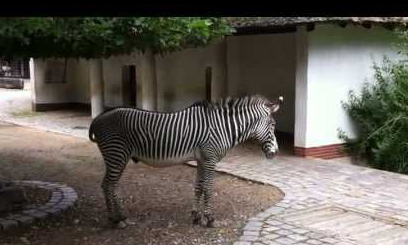The experts from areas inhabited by endangered Grevy’s zebra have developed a national action plan to guide efforts to ensure the survival of the Grevy’s zebra whose five-year strategy expired last year.
The meeting convened by Kenya Wildlife Service (KWS) with support from stakeholders was held at the Sportsman’s Arms Hotel in Nanyuki.
Participants were drawn from government, NGOs, local community, private land owners, people with interest in Grevy’s zebra conservation and officials from the Ethiopia Wildlife Conservation Authority.
The Grevy’s zebra population has been declining from an estimated 15,000 in the late 1970s to current 2,400.
This has been attributed to poaching, diseases, limited access to grazing and water resources as a result of competition with livestock, and due to scarcity of these resources.
The expired Grevy’s zebra strategy was credited for important milestones, including the 2008 first structured census for Grevy’s zebra, recruitment of a full-time national Grevy’s zebra liaison officer, establishment of various community conservancies in Northern Kenya, training of community scouts, enhanced research and conservation activities.
Plans are underway for a second national Grevy’s zebra census by the end of this year. The first was held in 2008.
Grevy’s zebra only survive in Kenya and Ethiopia’s semi-arid lands yet they historically existed in Somalia, Djibouti, Eritrea and Sudan where they have gone extinct.
Kenya’s Grevy’s zebra estimated national population of 2,400 is largely found on the shores of Lake Turkana, Samburu, Marsabit, Laikipia, Meru, Tsavo, Garissa and Naivasha.
The Grevy’s zebra is most adapted for semi-arid areas, especially those North of the equator and can go for five days without water with the exception of lactating females.
Dr. Kifle Argaw, the Director of Ethiopia Wildlife Conservation Authority, underscored the importance of cross border development of the strategy for managing and conserving the wild animal.
“We need to develop these species strategies together since if any country lags behind, it becomes a headache for the rest. We need to jointly push the conservation agenda for the Grevy’s zebra and other species,” he said.
The Grevy’s zebra is protected from any commercial use through its listing on Appendix I of the United Nations Convention on International Trade in Endangered Species of Wild Fauna and Flora (CITES).
The species is also classified as endangered by the International Conservation Union (IUCN).
The workshop was told that both Kenya and Ethiopia face shared challenges of poaching for meat and unproven medicinal value, predation reduced access to water resources and pasture, resource competition, invasion of invasive species and insecurity.
Mr Fanuel Kebede from the Ethiopia Wildlife Conservation Authority said the cross-border collaboration would enhance the survival of the endangered species.
Dr Paul Muoria of Nature Kenya said habitat fragmentation and the expected rapid infrastructural developments of roads, railways and oil pipelines on the Isiolo-Moyale, Lamu-Isiolo-Ethiopia-Sudan routes.
“We should consider these developments as having great tourism potential but bear in mind the looming threat of poaching and habitat loss as well as rapid human population increase,” he said.
Ben Wandago from the Africa Wildlife Foundation (AWF) pledged his organisations support for endangered species like the Grevy’s zebra and giraffe. “We are pleased with the direction KWS has taken of placing science at the fore to inform policy decisions,” he said.
Julius Cheptei from KWS noted that the creation of community conservancies in Northern Kenya which use the Grevy’s zebra as a flagship species was a big boost to efforts to win more space for conservation.









































